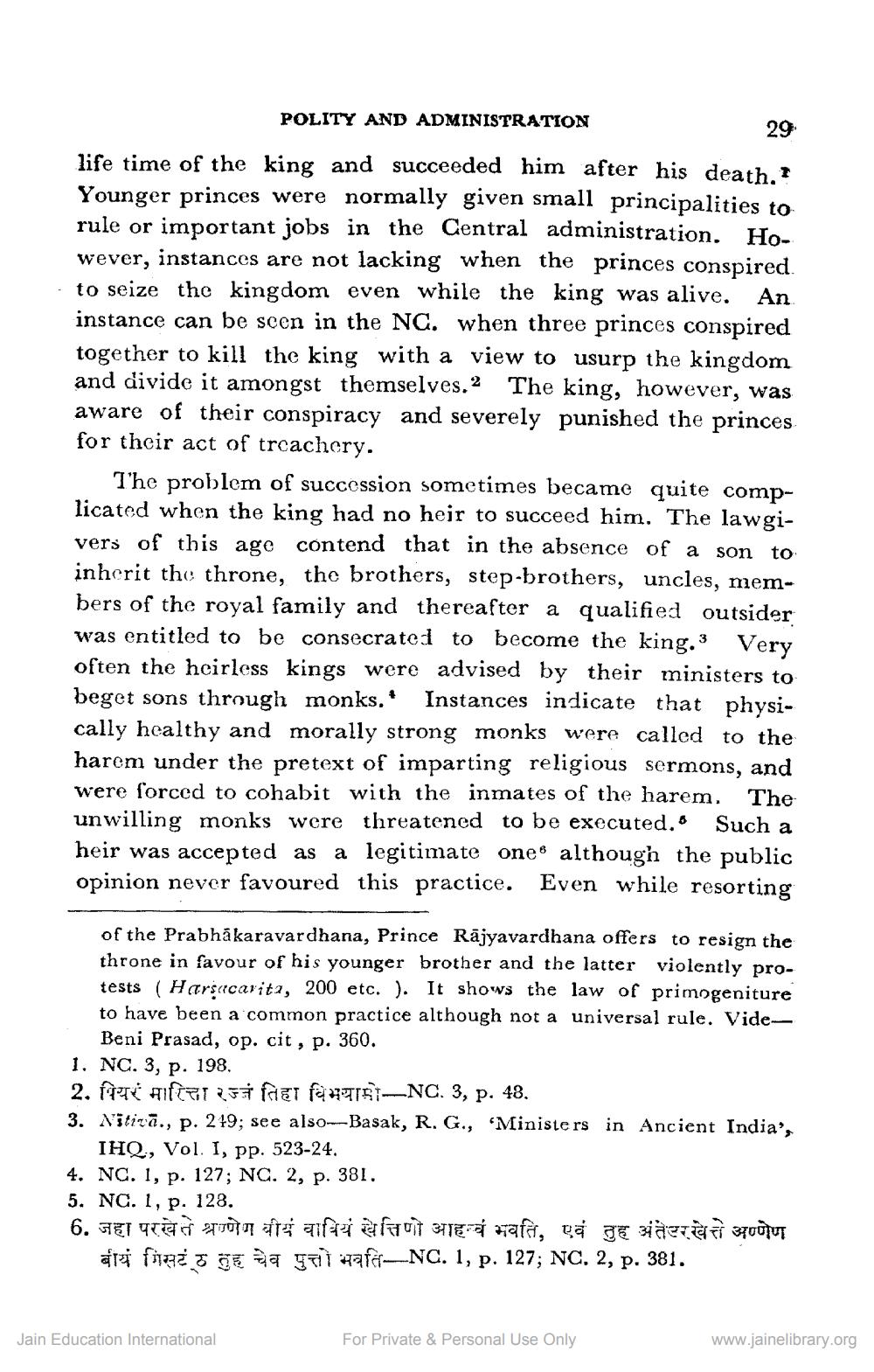________________
POLITY AND ADMINISTRATION
29 life time of the king and succeeded him after his death. I Younger princes were normally given small principalities to rule or important jobs in the Central administration. However, instances are not lacking when the princes conspired to seize the kingdom even while the king was alive. An instance can be seen in the NC. when three princes conspired together to kill the king with a view to usurp the kingdom and divide it amongst themselves.2 The king, however, was aware of their conspiracy and severely punished the princes for their act of treachery.
The problem of succession sometimes became quite complicated when the king had no heir to succeed him. The lawgivers of this age contend that in the absence of a son to inherit the throne, the brothers, step-brothers, uncles, members of the royal family and thereafter a qualified outsider was entitled to be consecrated to become the king.3 Very often the heirless kings were advised by their ministers to beget sons through monks.. Instances indicate that physically healthy and morally strong monks were called to the harem under the pretext of imparting religious sermons, and were forced to cohabit with the inmates of the harem. The unwilling monks were threatened to be executed. Such a heir was accepted as a legitimate ones although the public opinion never favoured this practice. Even while resorting
of the Prabhakaravardhana, Prince Räjyavardhana offers to resign the throne in favour of his younger brother and the latter violently protests (Harsacarita, 200 etc. ). It shows the law of primogeniture to have been a common practice although not a universal rule. Vide
Beni Prasad, op. cit, p. 360. 1. NC. 3, p. 198, 2. ATST RF a fa7151-NC. 3, p. 48. 3. Nitivă., p. 249; see also---Basak, R. G., 'Ministers in Ancient India',
IHQ, Vol. I, pp. 523-24. 4. NC. 1, p. 127; NC. 2, p. 381. 5. NC. 1, p. 128. 6. जहा परखेते श्रपणे वीयं वापियं खेत्तिणो आहवं भवति, एवं तुह अंटर खेते अण्णेण
ari filga g 9 gail nafamNG. 1, p. 127; NC. 2, p. 381.
Jain Education International
For Private & Personal Use Only
www.jainelibrary.org




